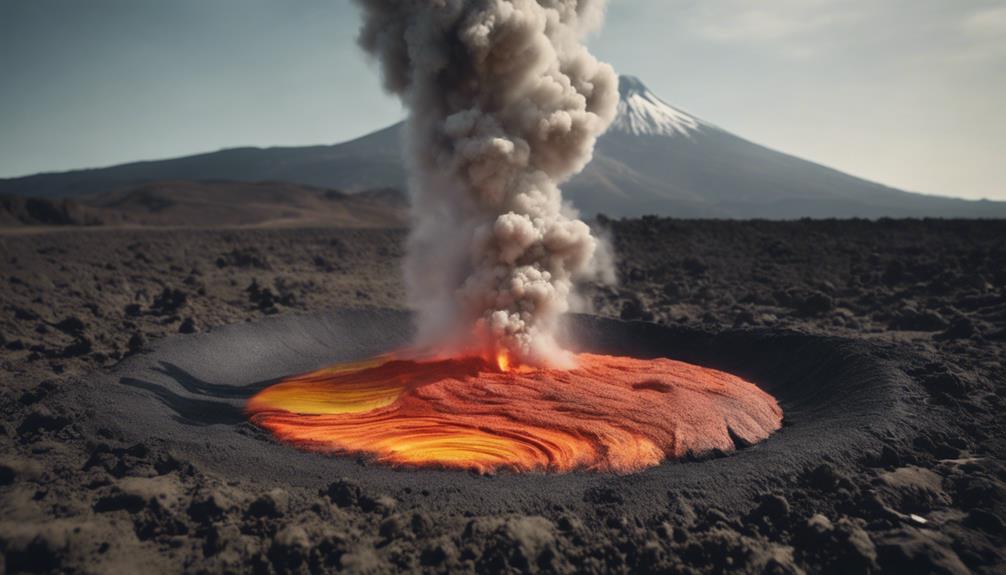The intricate relationship between shifting climate patterns and agriculture is leading to significant changes in our food sources and farming techniques. Greenhouse gases are impacting cultivation areas, avocado production is declining by 40%, and cherry trees in California are experiencing shortened dormancy periods. Warmer oceans are endangering oyster reefs, while shifts in temperature are challenging saffron, rice, coffee, and cocoa production. Adaptation of farming practices is essential for ensuring food security amidst these challenges. Understanding these impacts is important for sustainable agriculture and food security measures. Learn more about the evolving dynamics of our food sources and agricultural practices.
Key Takeaways
- Greenhouse gases impact crop cultivation areas.
- Climate change challenges saffron, rice, coffee, cocoa production.
- Shifts in rainfall timing affect crop growth.
- Adaptation of farming crucial for food security.
- Resilient agricultural practices needed for climate fluctuations.
Impact of Shifting Climate Patterns
Shifting climate patterns are fundamentally altering traditional agricultural practices worldwide. The global climate change is impacting food production drastically, with greenhouse gases leading to shifts in cultivation areas and threatening various crops.
Avocado production, for instance, faces a predicted 40% decrease due to rising temperatures, impacting the global supply chain. Similarly, cherry trees in California are experiencing shorter winter dormancy periods, while high temperatures are disrupting grape cultivation areas, potentially necessitating changes in production locations.
Additionally, warmer oceans are endangering oyster reefs as increased algae and acidic conditions disrupt oyster reproduction processes. These changes in temperature and rainfall patterns pose challenges to the production of saffron, rice, coffee, and cocoa, prompting the need for adaptive farming techniques to mitigate the adverse effects of the evolving climate.
Agriculture must adapt to these new environmental realities to guarantee food security and sustainability in the face of ongoing climate shifts.
Water Redistribution and Tectonic Plates

The impact of tectonic plate movements extends beyond geological changes, influencing water redistribution patterns on Earth's surface. Tectonic plates play an essential role in altering water distribution through various mechanisms. Subduction zones, where one plate slides beneath another, can cause water to be carried deep into the Earth, affecting surface water levels.
Changes in tectonic activity can greatly impact the distribution of freshwater resources, leading to shifts in water availability in different regions. Additionally, earthquakes and volcanic eruptions associated with tectonic plates can disrupt water flow and availability, further impacting ecosystems and human populations.
Understanding these complex interactions between tectonic plates and water redistribution patterns is vital for predicting and mitigating potential water-related challenges in the face of climate change. As global greenhouse gas emissions continue to alter the atmosphere, the influence of tectonic plates on water redistribution becomes increasingly important in the broader context of environmental changes.
Increased Earthquake and Volcanic Activity

Climate change has been linked to an increase in earthquake frequency and the impact of volcanic eruptions.
Rising temperatures can lead to glacier melting, potentially triggering more volcanic activity.
Changes in ice mass may also affect tectonic plate movements, influencing the occurrence of earthquakes.
Earthquake Frequency on Rise
Why are earthquake frequencies increasing globally, and what role does climate change play in this surge of seismic activity?
Earthquake frequency is experiencing a noticeable uptick worldwide, with a rise in seismic activity noted across various regions.
Climate change can potentially impact earthquake and volcanic occurrences by influencing the movement of tectonic plates and the redistribution of stress along fault lines. Shifts in temperature and precipitation patterns may also affect geological processes, potentially influencing the likelihood of earthquakes.
Scientists are actively researching the complex relationship between climate change and seismic events to better comprehend the potential connections and implications involved. Monitoring seismic activity is paramount to assess how a changing climate could be influencing both earthquake frequency and volcanic eruptions.
Understanding these dynamics is essential for adapting to the evolving landscape of natural disasters in the face of a changing climate.
Impact of Volcanic Eruptions
Increased volcanic eruptions are known to contribute to heightened earthquake and volcanic activity through various geological mechanisms. The release of magma during volcanic eruptions can trigger seismic events and volcanic tremors, leading to an increase in earthquake occurrences.
Additionally, the movement of tectonic plates caused by volcanic activity can further exacerbate seismic activity. The ash and gases expelled during volcanic eruptions can create pressure changes in the Earth's crust, impacting seismic movements.
Monitoring volcanic eruptions is crucial for understanding their influence on earthquake frequency and mitigating risks to surrounding areas. While human activities contribute to climate change and potentially impact volcanic eruptions, the relationship between volcanic activity and seismic events is complex and requires continuous research.
Understanding the interconnected nature of these geological processes is essential for predicting and managing the effects of increased volcanic eruptions on seismic activity in the context of a changing climate.
Precipitation Pattern Changes on Plates

Changes in precipitation patterns have a significant impact on agriculture and food production on plates. Shifts in rainfall timing and intensity can affect crop growth and yield on plates.
Increased or decreased precipitation levels can lead to water stress or excess moisture for crops on plates. Extreme precipitation events can cause soil erosion and nutrient runoff on plates.
Adapting farming practices to changing precipitation patterns is vital for food security on plates. Farmers need to be prepared to deal with the challenges posed by irregular rainfall, as it directly influences the success of their crops. By adjusting irrigation schedules, implementing water-saving techniques, and diversifying crop varieties, farmers can mitigate the risks associated with unpredictable precipitation patterns.
It's essential to develop resilient agricultural practices that can withstand the fluctuations in rainfall to secure a stable food supply for the growing population.
Sea Level Effects on Geological Composition

Rising sea levels pose significant risks to coastal regions worldwide. The erosion of coastlines and loss of land are direct consequences of increased water levels.
Moreover, saltwater intrusion into freshwater sources can have lasting effects on the geological composition of these areas.
Coastal Erosion Risks
The effects of sea level on the geological composition of coastlines are becoming more pronounced as coastal erosion risks continue to rise.
- Rising sea levels increase the risk of coastal erosion, threatening the stability of coastlines.
- Increased erosion due to higher sea levels can lead to loss of land, infrastructure, and habitats.
- Coastal erosion risks are exacerbated by storm surges and extreme weather events.
- Geological composition of coastlines is altered as erosion removes sediment and structures.
- Mitigation strategies such as seawalls and beach nourishment are used to combat coastal erosion caused by rising sea levels.
The ongoing rise in sea levels is a key driver behind the escalating threat of coastal erosion. With infrastructure, habitats, and valuable land at risk, the need for effective erosion mitigation strategies has never been more urgent. Storm surges and extreme weather events further compound the challenges faced by coastal regions, necessitating innovative solutions like beach nourishment and well-designed seawalls to fortify vulnerable coastlines.
Land Subsidence Impacts
Land subsidence, a consequence of factors like groundwater extraction and natural compaction, greatly impacts the geological composition of coastal areas in conjunction with rising sea levels. This phenomenon exacerbates the effects of sea-level rise, heightening the risk of flooding in vulnerable coastal regions. The San Joaquin Valley in California is a notable example where extensive land subsidence has been attributed to agricultural water pumping practices. The sinking of land surfaces due to subsidence not only poses a threat to infrastructure but also disrupts delicate ecosystems, making coastal communities more susceptible to flooding events. Addressing land subsidence is vital for climate change adaptation, as it plays a pivotal role in protecting coastal areas from the detrimental impacts of rising sea levels. The following table highlights key aspects related to the impacts of land subsidence on coastal areas:
| Impacts of Land Subsidence on Coastal Areas |
|---|
| Exacerbates flooding risk |
| Damages infrastructure |
| Disrupts ecosystems |
| Increases vulnerability of communities |
| Essential for climate change adaptation |
Saltwater Intrusion Effects
Saltwater intrusion effects on coastal areas, particularly the geological composition, can have a profound impact on freshwater sources and agricultural lands due to rising sea levels.
Saltwater intrusion poses a significant threat to coastal aquifers, risking the contamination of freshwater sources essential for human consumption and agricultural activities. The increased salinity levels resulting from this intrusion can disrupt ecosystems and agricultural practices in coastal regions, leading to decreased crop yields and food insecurity.
Additionally, the intrusion of saltwater can accelerate soil degradation processes, further compromising the productivity of agricultural lands and posing challenges to sustainable food production.
Managing saltwater intrusion is crucial to safeguarding freshwater reservoirs and ensuring the viability of agricultural practices in coastal areas, emphasizing the need for proactive measures to mitigate the adverse effects of rising sea levels on both water resources and land use.
Climate Change and Plate Tectonics Interaction

Intermittently shaping Earth's climate, plate tectonics intricately influence atmospheric conditions and ocean currents.
The movement of tectonic plates plays a significant role in climate change by impacting Earth's climate systems and geological features. As tectonic plates shift, they can alter ocean circulation patterns and atmospheric conditions, leading to changes in weather patterns globally.
Subduction zones and volcanic activity resulting from plate movements release gases that can affect the climate by contributing to the greenhouse effect. Additionally, tectonic shifts have the potential to change the distribution of continents, influencing wind patterns and climate zones.
These long-term changes in the Earth's climate are influenced by the dynamic interplay between plate tectonics and various environmental factors. Understanding this intricate interaction is essential for predicting and adapting to the effects of climate change on our planet.
Earth's Dynamic Geological Processes

How do Earth's dynamic geological processes shape the environment we inhabit? Plate tectonics, volcanic eruptions, ocean currents, and meteorite impacts all play significant roles in influencing Earth's climate and geological events:
- Plate Tectonics: Continents drift and collide, impacting land formations and ocean basins over vast timescales.
- Volcanic Eruptions: Release gases and particles affecting sunlight, influencing climate dynamics.
- Ocean Currents: Impact global heat distribution, influencing sea surface temperatures and climate variability.
- Meteorite Impacts: Events like the Chicxulub crater have historically caused climate changes by injecting dust and aerosols into the atmosphere.
- Interconnected Nature: Understanding these geological processes is essential for grasping the interconnected nature of climate change and geological events. By comprehending how these processes influence each other, we can better appreciate the complexity of Earth's systems and the profound impact they've on shaping the world we live in.
Environmental Systems Interconnectedness

Understanding the intricate connections between environmental systems is essential for managing the challenges posed by a changing climate and ensuring sustainable food production. Changes in climate significantly impact food production systems, necessitating shifts in agricultural practices to maintain crop yields. The interdependence of environmental systems emphasizes how alterations in climate can have far-reaching effects on food availability and quality. Climate change disrupts ecosystems, upsetting the delicate balance of natural resources and influencing food production processes. This interconnectedness underscores the urgent need for implementing sustainable agriculture practices to alleviate the impact of a changing climate on food systems and enhance food security measures. By comprehending the complex web of environmental systems, stakeholders can adapt food production methods effectively, safeguarding food availability for future generations.
| Environmental Systems | Interconnectedness | Importance |
|---|---|---|
| Climate Change | Ecosystem Disruption | Mitigating Impact |
| Agricultural Practices | Food Production Systems | Ensuring Sustainability |
| Crop Yields | Food Availability | Enhancing Food Security |
Frequently Asked Questions
What Is the Climate Changing?
Climate change refers to the long-term alteration in Earth's climate patterns, including rising temperatures, changing precipitation levels, and increased frequency of extreme weather events. These changes are primarily driven by human activities, such as burning fossil fuels and deforestation, leading to the accumulation of greenhouse gases in the atmosphere.
As a result, the planet is experiencing significant shifts in weather patterns and temperatures, impacting various ecosystems and human livelihoods globally.
How Does Climate Change Affect the Food We Eat?
Climate change has a profound impact on the food we eat. Rising temperatures can decrease avocado production by 40%, while warmer oceans threaten seafood industries. Changes in climate may necessitate new heat-tolerant lettuce varieties, and slight temperature shifts can impact coffee production.
Rising sea levels encroach on coastal rice production areas, affecting global food supplies. Adapting to these changes is vital for ensuring food security in the face of a changing climate.
How Does Food Waste Affect Climate Change?
Food waste has a substantial impact on climate change, contributing around 8% of global greenhouse gas emissions. Methane emissions from decomposing food in landfills are especially concerning, as methane is 25 times more potent than CO2.
Approximately one-third of all food produced worldwide is wasted, leading to unnecessary greenhouse gas emissions. Addressing food waste is essential in reducing emissions and combating climate change effectively.
What Are the Major Causes of Climate Change?
Human activities, like burning fossil fuels and deforestation, are major contributors to climate change. These actions release greenhouse gases, such as carbon dioxide and methane, into the atmosphere, trapping heat and leading to global warming.
The industrial processes and energy production from fossil fuels intensify the greenhouse effect, while deforestation reduces the Earth's ability to absorb carbon dioxide. These factors collectively drive the changes in Earth's climate patterns.
Conclusion
To sum up, the intricate relationship between climate change and plate tectonics is a complex web of interactions that can't be understated.
The impacts of shifting climate patterns on water redistribution, precipitation changes, and sea level rise are reshaping the Earth's geological composition at an alarming rate.
As these environmental systems interconnect in unprecedented ways, it's clear that our planet is undergoing dynamic geological processes that will continue to shape the future of our world.










